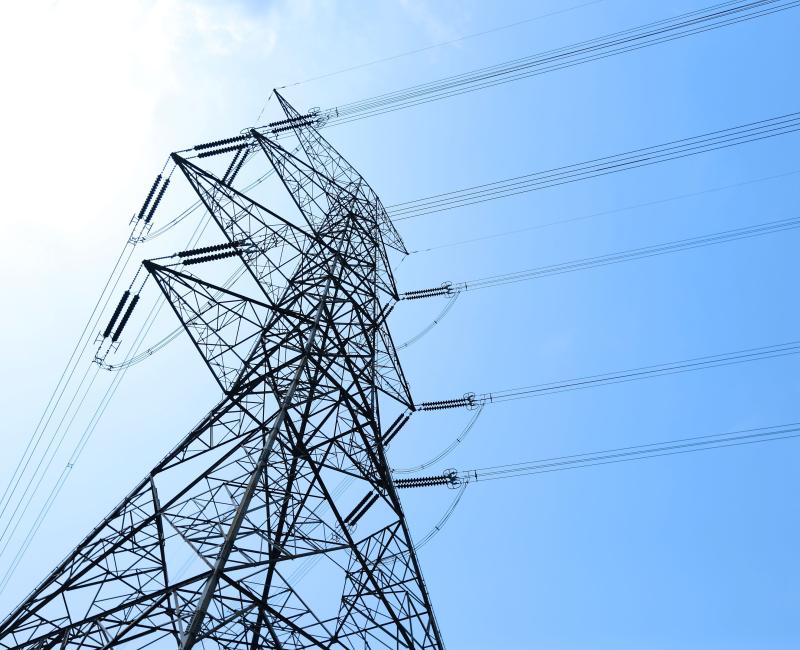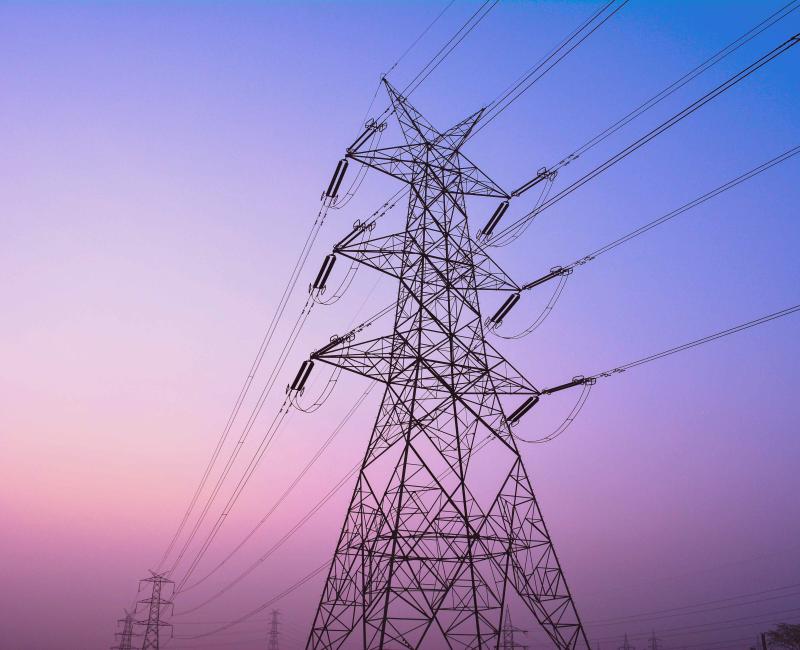11 SpLTCZC - Approved
11 SpLTCZC - Approved
Latest approved methodologies for splitting long-term cross-zonal capacity of the respective capacity calculation region
11 Scheduled exchanges
11 Scheduled exchanges
Documentation on the approval process of these methodologies
11 Scheduled exchanges - Approved
11 Scheduled exchanges - Approved
Latest approved scheduled exchange methodologies
16 CCM - Approved
16 CCM - Approved
Latest approved capacity calculation methodologies of the respective capacity calculation region
ACER consultancy study on incentivising efficient investments in electricity grids

ACER consultancy study on incentivising efficient investments in electricity grids
What is it about?
Significant enhancement in electricity grid capacity is needed to realise Europe’s decarbonisation objectives and ensure a high level of security of supply.
In the context of the European Commission’s EU Action Plan for Grids, ACER is looking at best practices to promote smart grids and network efficiency technologies through tariff design.
ACER has thus commissioned the Florence School of Regulation (FSR) to conduct a study on existing regulatory frameworks and how regulators could incentivise a more efficient use of existing and future electricity grids.
What is in the consultant’s report?
Building on the previous research conducted by FSR on behalf of ACER, this new report by FSR presents:
- An overview of regulatory practices in Europe, the United States and Australia that promote innovation and efficiency in electricity transmission investments.
- A new regulatory scheme which focuses on the value projects bring (i.e. benefit) and not on their costs. By sharing this benefit between the grid user and grid operator, a stronger incentive for technology-neutral solutions is created while mitigating the tariff increase (in comparison to the business as usual, e.g. investing into infrastructure alone).
Regulators request more time to decide on a new method for calculating electricity reserves

Regulators request more time to decide on a new method for calculating electricity reserves
What is it about?
On 22 May 2024, the National Regulatory Authorities (NRAs) of the Continental Europe Synchronous Area (CE) requested from ACER a six-months extension to decide on the Transmission System Operators’ (TSOs') proposal to introduce a probabilistic dimensioning approach of Frequency Containment Reserves (FCRs). This new approach aims to improve how FCRs are calculated to stabilise the power grid’s frequency during supply and demand imbalances.
The countries of the Continental Europe Synchronous Area are Austria, Belgium, Bulgaria, Croatia, Czechia, Denmark, France, Germany, Greece, Hungary, Italy, Luxembourg, the Netherlands, Poland, Portugal, Romania, Slovakia, Slovenia and Spain.
What does Frequency Containment Reserve (FCR) mean?
Under the EU Network Code on System Operation, FCRs (also known as primary control reserves) are active power reserves used as a first response to stabilise the power grid’s frequency after an imbalance between supply and demand.
In the event of a frequency deviation (e.g. following a planned or unplanned power plant outage), their power output can be quickly adjusted to restore grid stability.
Why consider probabilistic dimensioning for FCR?
Historically, TSOs in this region have used a ‘deterministic’ criterion for FCR dimensioning, ensuring that the FCR can handle frequency deviations resulting from the worst-case system outages, typically set at 3000 MW.
In November 2023, TSOs proposed a ‘probabilistic’ dimensioning for FCRs, which considers load and generation patterns, as well as inertia factors (such as synthetic and real-time minimum inertia). This approach aims to enhance the power system’s resilience by reducing the probability of insufficient FCR capacity to once every 20 years or less.
What are the next steps?
ACER intends to act promptly on this request, aiming to issue a decision by the end of July 2024.
If ACER decides to grant this extension, 11 January 2025 would be the new deadline for CE NRAs to reach an agreement on the TSOs’ proposal.
ACER to decide on amending the methodology for calculating scheduled exchanges resulting from single day-ahead electricity market coupling

ACER to decide on amending the methodology for calculating scheduled exchanges resulting from single day-ahead electricity market coupling
What is it about?
On 24 May 2024, the European National Regulatory Authorities (NRAs) referred to ACER a joint proposal from all Transmission System Operators (TSOs) to amend the methodology for calculating scheduled exchanges resulting from single day-ahead coupling (SDAC).
What is the methodology about?
The methodology describes how the scheduled exchanges between bidding zones, scheduling areas and Nominated Electricity Market Operators’ (NEMOs’) trading hubs are calculated in the SDAC. Scheduled exchanges are electricity transfers scheduled between geographic areas for each market time unit and for a given direction.
Why amend the methodology?
The methodology was previously amended in May 2023 to improve how scheduled exchanges between NEMOs’ trading hubs are calculated.
In the new proposal, TSOs deem it necessary to further improve the SDAC algorithm to enable the effective implementation of the 15-minute Market Time Unit (MTU) in the SDAC (expected for January 2025). The robustness of the algorithm needs to be enhanced to handle the increased volume of data within the limited calculation timeframe. To achieve this, TSOs propose introducing a back-up functionality for the calculation of the scheduled exchanges between bidding zones.
What are the next steps?
ACER expects to decide on the amended methodology by September 2024.
Contact Information
Interested parties may contact ACER on this matter at ACER-ELE-2024-009@acer.europa.eu by 28 June 2024 at the latest.
Relevant documents
All TSOs’ proposal to amend the day-ahead scheduled exchanges methodology.
All TSOs’ proposal to amend the day-ahead scheduled exchanges methodology (in track changes).
Enabling energy consumers and small players play their role: autumn consultation on demand response

Enabling energy consumers and small players play their role: autumn consultation on demand response
What is it about?
On 8 May 2024, ACER received electricity system operators’ proposal for an EU-wide network code on demand response. The proposal was drafted by the EU Distribution System Operators Entity (EU DSO Entity) and the European Network of Transmission System Operators (ENTSO-E). Their proposal also includes amendments to the three related electricity network codes: balancing, system operation, and demand connection.
After reviewing and where necessary revising the system operators’ proposal, ACER will consult on its revised draft in autumn 2024 before submitting it to the European Commission by March 2025.
Why is this network code relevant?
The network code on demand response will:
- Establish harmonised rules to facilitate market access for demand response, including load, storage and distributed generation (aggregated or not).
- Enable market-based procurement of services by Distribution System Operators (DSOs) and Transmission System operators (TSOs).
- Be applicable in all EU Member States.
Demand response is key for integrating the growing share of renewable energy and new electricity loads (e.g. resulting from heat pumps and electric vehicles) in a cost-efficient way.
In developing this draft network code, ACER is contributing to a more cost-efficient and clean energy transition by facilitating access to EU wholesale electricity markets for smaller actors, including consumers.
Have your say!
ACER is running a public consultation from 5 September to 31 October 2024 on what will be ACER-revised draft proposal. ACER will run a webinar during the consultation period, on 1 October 2024.
Background
In June 2022, ACER was mandated by the European Commission to draft a framework guideline on demand response which serves as guidance for the system operators to then draft the EU network code. After engaging stakeholders via a public consultation and a workshop during the summer of 2022, ACER submitted the framework guideline to the European Commission in December 2022. The European Commission cleared ACER’s framework guideline in March 2023, and asked the DSO Entity and ENTSO-E to draft the proposal for the new binding EU rules.
What are the next steps?
- ACER public consultation: 5 September - 31 October 2024.
- ACER webinar: 1 October 2024, 14:00-16:00 (CET).
ACER will submit the revised network code proposal to the European Commission by March 2025.
ACER to consult on amendments to the electricity grid connection network code

ACER to consult on amendments to the electricity grid connection network code
What is it about?
In the context of the ongoing revisions of the European grid connection network codes, ACER will consult with stakeholders (during summer 2024) to collect views on ACER’s concrete amendment proposals to the network code on grid connection requirements for high voltage direct current systems and related power park modules (NC HVDC).
What are the electricity grid connection network codes?
Network codes are binding rules governing connection requirements to the electricity networks in an effective and transparent manner. The codes are key for ensuring the safety of system operation and the efficiency of the EU's power grid.
There are three electricity grid connection network codes:
- The network code on requirements for grid connection of generators (RfG Regulation) establishes common standards for generators to connect to the grid.
- The network code on demand connection (DCC Regulation) sets up harmonised requirements for demand facilities to connect to the grid.
- The network code on requirements for grid connection of high voltage direct current systems (HVDC Regulation) covers the definition of harmonised standards for direct current (DC) connections.
Why change the rules?
The electricity grid connection codes were established in 2009, with the HVDC Regulation entering into force in 2016. Important developments to decarbonise the European energy and transport sectors happened since then:
- September 2022: ACER initiated the amendment process of the existing European grid connection network codes, as requested by the European Commission.
- December 2023: after consulting with stakeholders, ACER submitted to the European Commission its Recommendation 03-2023 proposing amendments to two grid connection network codes (on requirements for grid connection of generators and on demand connection).
- December 2023: the final report of the Grid Connection European Stakeholder Committee’s Expert Group on Connection Requirements for Offshore Systems was released (proposing amendments to the NC HVDC).
- End of 2024: ACER will submit to the European Commission its recommendation on proposed amendments to the third grid connection network code (the NC HVDC).
The revisions to the NC HVDC aim to:
- Enhance the existing grid connection regulatory framework.
- Align the code with the network codes on requirements for grid connection of generators and on demand connection.
- Ensure the interconnected system is adapted to emerging trends, such as the increasing generation capacity of offshore networks (AC hubs) and the connection of new system users (storage, demand facilities).
Have your say!
To inform its drafting of the amendment proposal to the NC HVDC, ACER will:
- run a public consultation from 17 June until 8 September 2024;
- hold a webinar on 24 June 2024 (09:30 – 11:00 CET).
